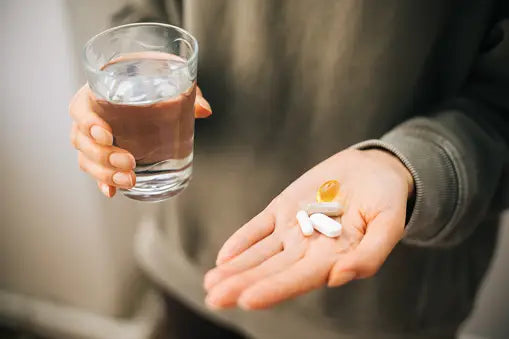

Caffeine vs Green Tea vs Tyrosine: Best Fat Burner
Table of Contents
Caffeine vs Green Tea vs Tyrosine: Best Fat Burner
An increasing number of studies have examined the effects of well-known food ingredients such as caffeine, green tea, and tyrosine on increasing sympathetic nervous system activity with an aim of increasing metabolism and weight loss in humans. The three ingredients may work through different metabolic pathways to increase metabolism:
Green Tea Extract: Catechins from Green Tea Extract, especially the polyphenol catechin epigallocatechin gallate (ECGC), have been associated with an increase in sympathetic nervous system activity, thermogenesis, and fat oxidation in humans.
Tyrosine: The amino acid tyrosine is a noradrenaline precursor and it may enhance noradrenaline synthesis and release in sympathetic nervous system. However, it is believed that the rate of catecholamine synthesis is regulated by the rate-limiting enzyme tyrosine hydroxylase, which is strongly influenced by end-product inhibition via dopamine, adrenaline, and noradrenaline. In a rat study, tyrosine has been shown to increase sympathetic nervous system activity and to suppress food intake in a synergistic and dose-dependent manner when administered with the above sympathomimetics (i.e ephedrine, caffeine, etc).
Caffeine: The acute effect of caffeine on thermogenesis ranges from 3 to 16%. Only one study has investigated the effect of caffeine on food intake. Epidemiological studies also suggest that caffeine might possess weight-reducing properties.

Researchers examined the effect of three different food ingredients tyrosine, green tea extract, and caffeine on resting metabolic rate and haemodynamics, and on ad libitum energy intake and appetite. Twelve healthy, normal weight men participated in a four-way crossover, randomized, placebo-controlled, double-blind study. Treatments were administered as tablets of 500 mg green tea extract, 400 mg tyrosine, 50 mg caffeine, or placebo, and were separated by >3-day washout. The acute thermogenic response was measured in a ventilated hood system for 4 hours following ingestion. Blood pressure, heart rate (HR), and subjective appetite sensations were assessed hourly and ad libitum energy intake 4-hour post-dose. At the end of the study, caffeine induced a thermogenic response of 6% above baseline value compared to placebo. However, the ingested 50 mg caffeine is of rather low dosage compared to previous studies where the acute dose has generally been between 100 and 400 mg caffeine, inducing a thermogenic response between 3 and 16% compared to the control.
The thermogenic responses to green tea extract and tyrosine were not significantly different from placebo. Tyrosine tended to increase 4-h respiratory quotient by 1% compared to placebo. Ad libitum energy intake was not significantly different between treatments, but was reduced by 8%, 8%, and 3% compared to placebo after intake of tyrosine, green tea extract and caffeine, respectively. Only caffeine was thermogenic in the given dose. In conclusion, only caffeine in the given dose was thermogenic and without causing or side effects. Although the reductions in ad libitum energy intake were not significant, they support previous findings.
In summary, make sure your fat burner contains some caffeine if you want to increase metabolic rate. Whats interesting is that it seems like a combination of green tea and caffeine work best for increasing metabolic rate compared to taking either ingredient alone. One study found that the combination of green tea and caffeine improved weight loss and maintenance in people who were overweight and moderately obese. Both green tea and caffeine may work synergistically together through separate metabolic pathways.
| Astrup A, Toubro S, Cannon S, Hein P, Breum L, Madsen J (1990). Caffeine: a double-blind, placebo-controlled study of its thermogenic, metabolic, and cardiovascular effects in healthy volunteers. Am J Clin Nutr 51, 759–767. |
Dulloo AG, Seydoux J, Girardier L, Chantre P, Vandermander J (2000). Green tea and thermogenesis: interactions between catechin-polyphenols, caffeine and sympathetic activity. Int J Obes Relat Metab Disord 24, 252–258.
Rasmussen DD, Ishizuka B, Quigley ME, Yen SS (1983). Effects of tyrosine and tryptophan ingestion on plasma catecholamine and 3, 4-dihydroxyphenylacetic acid concentrations. J Clin Endocrinol Metab 57, 760–763.
Dulloo AG, Seydoux J, Girardier L, Chantre P, Vandermander J. Green tea and
thermogenesis: interactions between catechin-polyphenols, caffeine and
sympathetic activity. Int J Obes Relat Metab Disord. 2000 Feb;24(2):252-8.
Acheson KJ, Zahorska-Markiewicz B, Pittet P, Anantharaman K, Jequier E (1980). Caffeine and coffee: their influence on metabolic rate and substrate utilization in normal weight and obese individuals. Am J Clin Nutr 33, 989–997.
Tremblay A, Masson E, Leduc S, Houde A, Després J-P (1988). Caffeine reduces spontaneous energy intake in men but not in women. Nutr Res 8, 553–558.
Belza A, Toubro S, Astrup A. The effect of caffeine, green tea and tyrosine on
thermogenesis and energy intake. Eur J Clin Nutr. 2009 Jan;63(1):57-64.
Diepvens, K., Westerterp, K., & Westerterp-Plantenga, M. (2007). Obesity and thermogeness related to the consumption of caffeine, ephedrine, capsaicin, and green tea. American Journal of Physiology- Regulatory, Imperative and Comparative, 292, R77-R85.

















